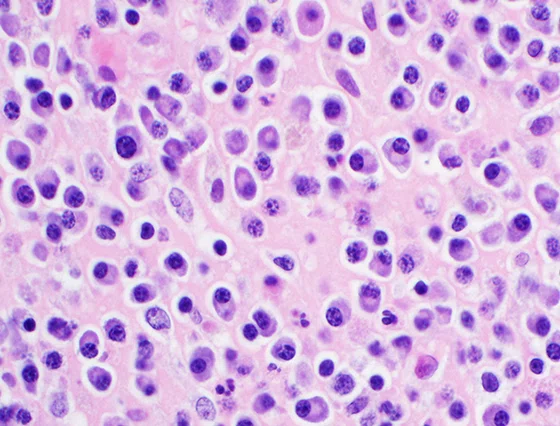


Clinical research
New Frontiers in Aortic Regurgitation Disease Management
A multicenter study suggests avenues for improved decision-making in asymptomatic aortic regurgitation patients.
A multicenter study suggests avenues for improved decision-making in asymptomatic aortic regurgitation patients.
Aortic regurgitation (AR) — also termed aortic insufficiency — is a valvular disease characterized by a reflux of blood from the aorta into the left ventricle during diastole. From an etiologic perspective, AR results from abnormalities in aortic leaflets or primary aortic root disease.
According to the American Heart Association, AR may be caused by
Weakening of the Valve Tissue Due to Aging
Bacterial Inflammation of the Heart
Hypertension
Untreated
Syphillis
Injury
Whereas mild AR cases may be asymptomatic; signs of severe AR include heart palpitations, chest pain, fatigue, arrhythmia, shortness of breath and fainting. Hence, correct evaluation and timely management of AR are critical.
Maan Malahfji, MD, Assistant Professor of Cardiology, investigated the association of cardiac remodeling with AR outcomes and found that cardiac magnetic resonance (CMR) outcome studies of AR severity and left ventricular (LV) volumes can aid in decision-making for asymptomatic AR patients. The study’s results are published in the Journal of the American College of Cardiology in 2023.

Maan Malahfji, MD
Current AR management entails an evaluation of symptoms, LV ejection fraction (LVEF), and linear LV end-systolic diameter. Decision-making in asymptomatic chronic AR patients is a complex process. Precise determination of aortic severity is critical. Unfortunately, in many cases, AR symptoms are not recognized and the extent of AR severity may be unclear. Notably, moderate or severe AR is prevalent in about 0.5% of population in the United States and more common in older adults. The goal of effective disease management is to prevent asymptomatic AR from progressing to symptomatic stages that could compromise the patient’s health and even result in death.
AR can be categorized into acute and chronic. Acute AR entails a quick and sudden volume overload of the left ventricle whereas chronic AR entails a gradual overload. The primary diagnostic tool to evaluate AR is transthoracic echocardiography which sheds light on the type and degree of valve dysfunction and the hemodynamic burden induced by the valve defect. Echocardiography — which uses high-frequency sound waves to take images of the heart — can also provide information on the progressive increase in LV volumes. Other diagnostic tools include chest X-rays, CMR and coronary angiograms. However, an accurate evaluation of AR is dependent on a thorough understanding of the mechanism of AR, which requires understanding the valve morphology as well as measurements of different segments of the aorta.
In this multicenter study of asymptomatic AR patients with preserved left ventricular systolic function, we identified quantitative CMR parameters associated with clinical outcomes that can guide clinical management decisions. These results support the incorporation of left ventricular volumes rather than left ventricular diameters in the evaluation and management of patients with moderate to severe AR.
Maan Malahfji, MD
Assistant Professor of Cardiology
Quantifying AR severity has been clinically challenging. Typically, echocardiography is used in combination with CMR to gain a composite understanding of AR severity. Moreover, guidelines from the American College of Cardiology and the American Heart Association suggest CMR usage when echocardiography results are inconclusive. CMR imaging is a reproducible and non-invasive technology that is the gold standard for assessing LV volume, LVEF and mass. Since quantitative CMR studies in AR are few, Malahfji set out to investigate the association of CMR quantitative thresholds and outcomes in asymptomatic AR patients with preserved LVEF (LVEF greater than or equal to 50%).
According to Malahfji, “In this multicenter study of asymptomatic AR patients with preserved left ventricular systolic function, we identified quantitative CMR parameters associated with clinical outcomes that can guide clinical management decisions. These results support the incorporation of left ventricular volumes rather than left ventricular diameters in the evaluation and management of patients with moderate to severe AR.”
Malahfji and his team studied 458 patients with moderate or severe AR as a part of a multicenter study of four U.S. prospective institutional registries. The median age of these patients was 60, and the median follow-up period was 2.4 years. The primary outcome was the development of symptoms, LVEF depreciation to less than or equal to 50%, indications for surgery or death. The secondary outcome was the same except for surgery.
Based on multivariate regression analysis and receiver operating characteristic analysis, Malahfji concluded that CMR parameters associated with clinical outcomes can guide decision-making in AR management. Furthermore, Malahfji noted that LV volume measurements are more beneficial as compared to LV diameters.
Improved decision-making can reduce morbidity and mortality, especially since surgery at earlier time points is likely to improve AR outcomes. The study, led by Malahfji, aimed to address knowledge gaps in the field of AR management in three key aspects. First, it provides a better understanding of the relationship between LV volumes and AR outcomes. Second, it provides data sets for AR prognostic analysis from a large sample size. Thirdly, it recommends using CMR LV volume assessments for clinical decisions in AR management. This is particularly valuable since LV end-systolic diameter measurements can vary based on the technique used. The main limitation of this study is a potential selection bias since the patients were referred for advanced imaging beyond echocardiography.
Further studies are warranted to evaluate the diagnostic accuracy of CMR. Multiparametric and multi-imaging approaches can be implemented in concert to gather data sets for optimizing diagnosis, monitoring prognosis and accurate decision-making in AR management.
Maan Malahfji, Valentina Crudo, Yodying Kaolawanich, Duc T Nguyen, Amr Telmesani, Mujtaba Saeed, Michael J Reardon, William A Zoghbi, Venkateshwar Polsani, Michael Elliott, Robert O Bonow, Edward A Graviss, Raymond Kim, Dipan J Shah. Influence of Cardiac Remodeling on Clinical Outcomes in Patients With Aortic Regurgitation. J Am Coll Cardiol. 2023 May 16;81(19):1885-1898. doi: 10.1016/j.jacc.2023.03.001.
This research was conducted using the SCMR Registry Resource. Dr Malahfji has received research support from the Houston Methodist Research Institute and Guerbet LLC. Dr Reardon is a consultant to Medtronic, Boston Scientific, Abbott Medical, and Gore Medical. Dr Shah has received support from the National Science Foundation (CNS-1931884) and the Beverly B. and Daniel C. Arnold Distinguished Centennial Chair Endowment.
Abanti Chattopadhyay, PhD
October 2023
Related Articles








